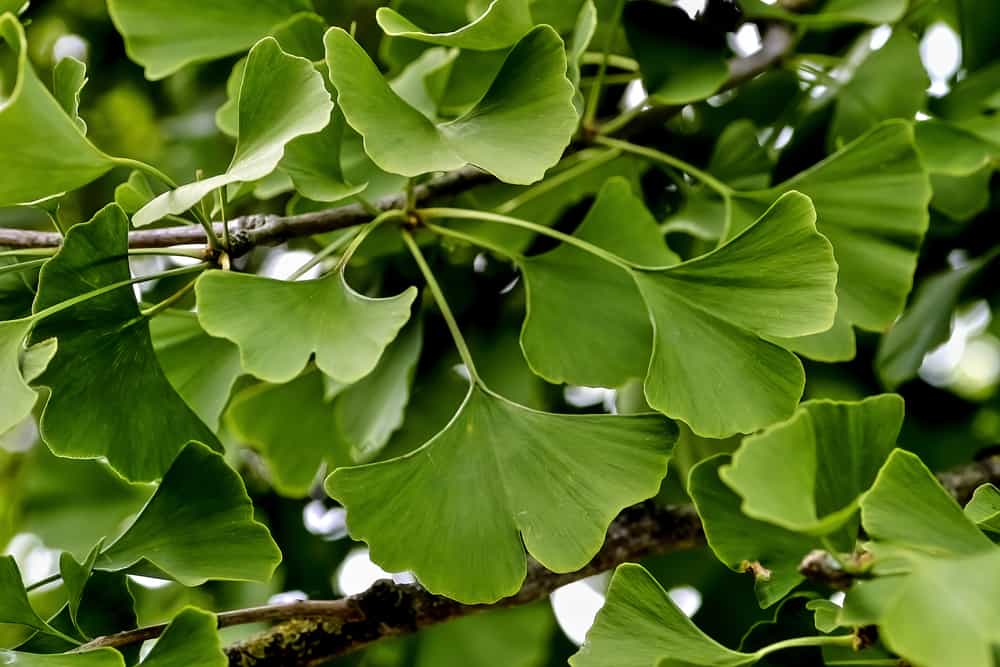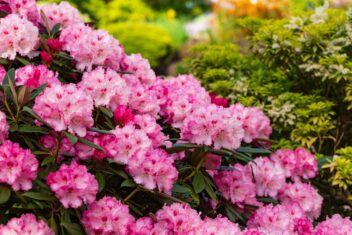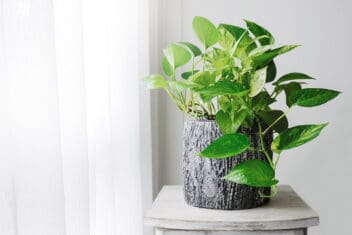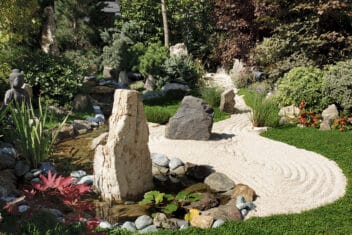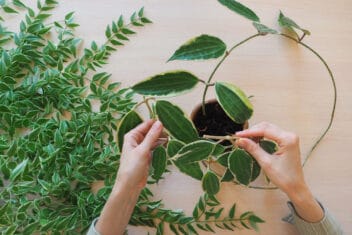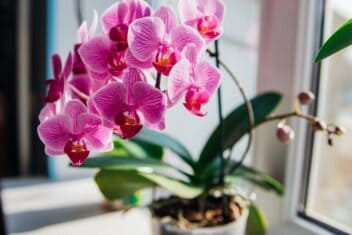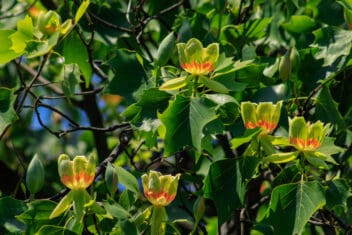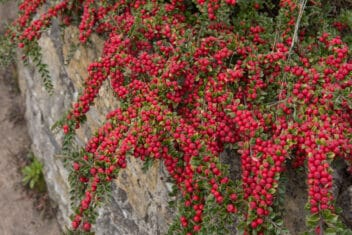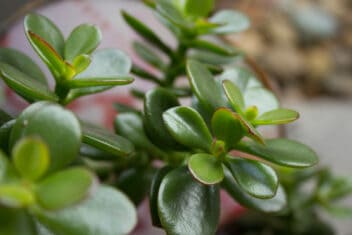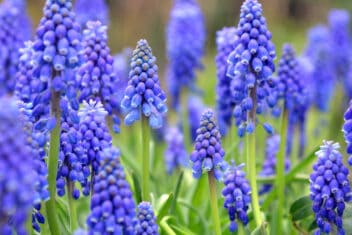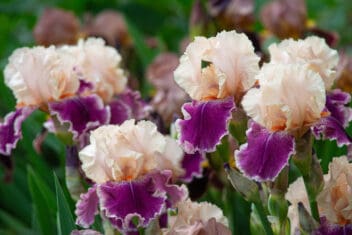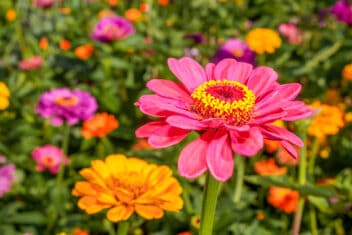Ginkgo biloba has existed for millennia and is a living fossil. The trees are adaptable, surviving in all kinds of soil, and tolerate salt, partial shade, and even clay soil. That, plus their columnar shape, makes growing ginkgo trees a popular option for urban planting.
The gorgeous fan-shaped leaves are instantly recognizable, and the brilliant fall colors lighten up any landscape.
It’s also one of the world’s most commonly sold medicinal plants, and you can eat the nuts.
No wonder ginkgo trees are so popular! Here’s what to know:
Best Cultivars of Ginkgo Trees
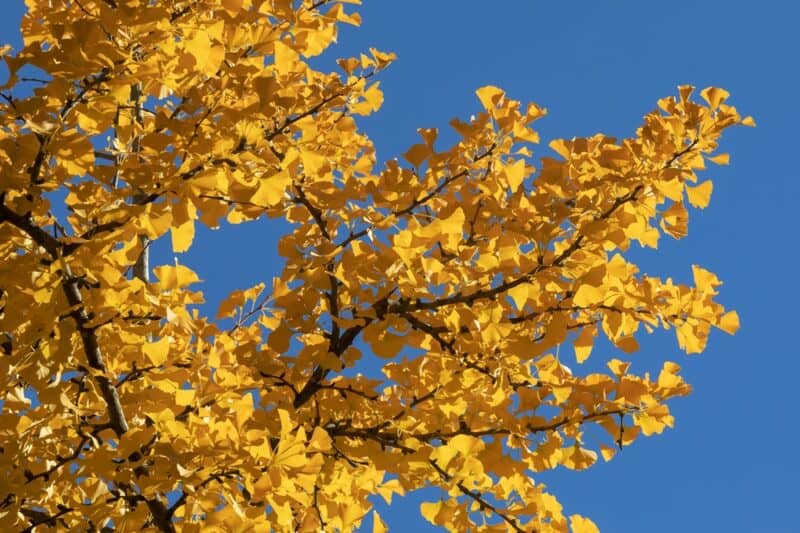
Ginkgo trees, Salisburia adiantifolia, are also known as maidenhair trees.
Ginkgo originated in China, specifically in the remote mountain areas of the Zhejiang province in eastern China. These trees are sturdy, resilient, and can be grown in a wide variety of environments.
Ginkgo trees have a striking appearance that draws all the attention in the garden. Their color starts chartreuse and progresses to a beautiful golden yellow in autumn. They come in dwarf cultivars and towering 100-foot-tall cultivars.
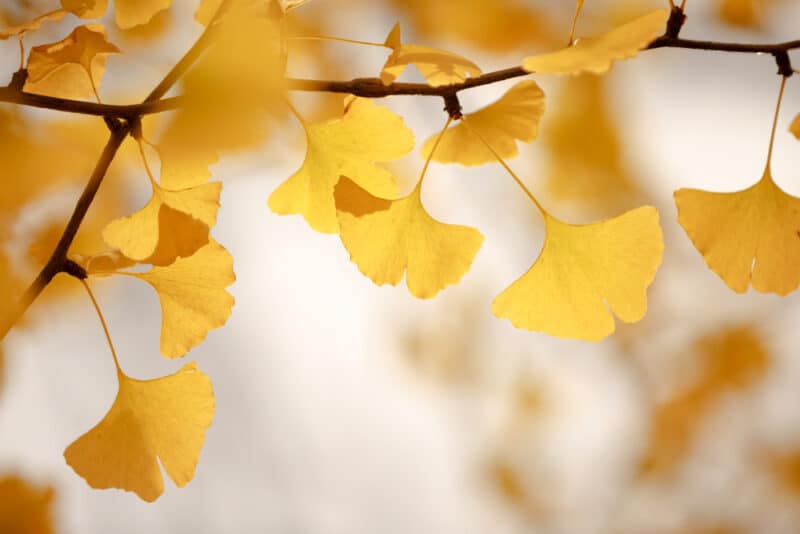
Most gingko trees have similar characteristics in that they have a pyramidal or columnar shape and fan-shaped leave that turn golden yellow in the fall. But there is some variation among the different cultivars. If you plan on growing ginkgo trees, get to know some of the more common ones.
‘Autumn Gold,’ for instance, is a popular male cultivar of this tree that grows up to 40-50 feet high and 25-30 feet wide.
Here are some other cultivars worth checking out:
- ‘Golden Colonnade’ is tall and narrow, perfect for parking strips
- ‘Halka’ is hailed for its striking yellow fall foliage
- ‘Magyar’ grows quickly and reaches up to 100 feet tall
- ‘Presidential Gold’ has bright gold fall foliage
- ‘Princeton Sentry’ is a long-lived 50-foot-tall male form
Some cultivars will grow better in warm regions than others. For example, ‘Princeton Sentry’ prefers to grow in warm climates, whereas ‘Autumn Gold’ can survive better in cold areas.
Check with local nurseries before choosing the cultivar you want to plant. They can help you determine what grows best in your area.
Look for cultivars with leaves that are heavily textured or those that shift hues throughout the season. Some are exceptionally vibrant in the fall, and others are more subdued.
If you don’t want to deal with the mess and smell of the female tree, pick male trees. Most that are sold in nurseries are male trees.
Planting Ginkgo
You can be successful growing ginkgo trees pretty much anywhere in USDA Hardiness Zones 3-9 except for sweltering hot, dry areas.
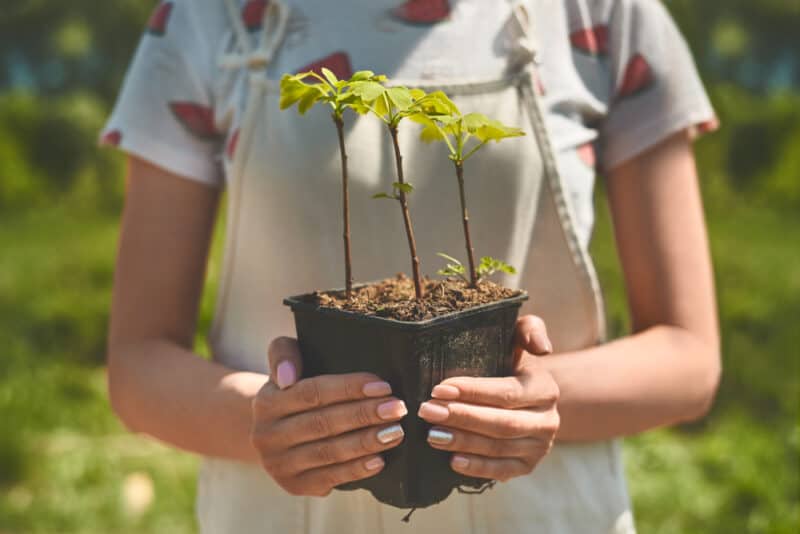
Ginkgo trees aren’t picky when it comes to soil type. They prefer well-drained sandy or loamy soil with a pH of 5.0-8.0. The most important thing is that it’s well-draining and in the right light.
Be mindful of spacing requirements when growing ginkgo trees. Some trees only need a few feet, while others need 20 or more. It depends on the growth habit and the ultimate size of the tree. Determine how large your tree will be and go from there.
The best time to plant ginkgo is early spring or fall. To begin with, loosen the soil by digging up a deep enough hole for the roots and twice as wide. Add well-rotted compost to the removed soil to add nutrients and loosen up the earth.
Most people buy ginkgo trees as live plants in containers or with a burlap-wrapped rootball. Start by unwrapping the burlap or removing the container and loosening up the roots. Then, place the plant in the hole you made.
It should sit just as high as it was in the container or with the top roots of the rootball just below the surface of the soil.
Once the tree is securely in the ground, fill back in around the roots with amended soil. Water and add more soil if necessary.
Caring for Your Growing Ginkgo Tree
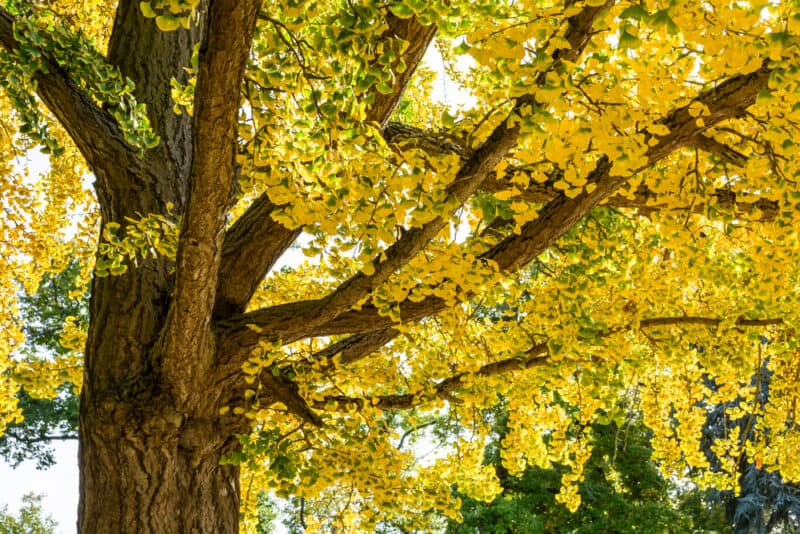
Ensure your ginkgo tree receives plenty of water during the early growth phase. Once the plants are established, they don’t need supplemental water. Young plants also need extra water when temperatures are high.
Water young plants after the first few inches of soil dry out.
Mature trees rarely need additional water unless they appear stressed or you’re experiencing an unusually hot and dry period.
Young ginkgo trees benefit from fertilizer. Use a tree-specific fertilizer, following the manufacturer’s directions closely, for the first few years after you plant your tree. Fertilize in the spring and again in the fall.
Mature trees don’t need additional food.
Most cultivars of ginkgo trees are best planted in areas with full sun and are salt-tolerant, which means they can be grown near the sea or next to roads. The trees can tolerate partial sun, but the fall coloring won’t be as vibrant.
Pruning
Ginkgo trees typically have a columnar or pyramidal shape, but some can take on more of an umbrella growth habit. You don’t need to prune your tree to give it any specific shape, but you can do some pruning when it’s young.
Encourage a central leader and remove any secondary trunks when the plant is young to give it a columnar shape.
Support your growing ginkgo tree by removing dead, diseased, or deformed branches. If you decide to give a mature tree some shape, never remove more than a third of the branches at one time.
Common Pests and Diseases
Ginkgo trees rarely experience severe problems. That’s partly because the tree contains two poisonous acids that repel most insects. But there are some pests that you should be wary of when looking after these trees at home.
Caterpillars
The omnivorous looper (Sabulodes aegrotata) is known to feed on ginkgo trees.
These two-inch long, yellow and green caterpillars chew on the leaves and roll them up to form nests. They also feed on young sprouts, causing distortion or a lack of growth.
Wasps and spiders typically keep populations under control, but if you have a large infestation, a spray containing the beneficial bacteria Bacillus thuringiensis will kill the larvae.
Root Knot Nematodes
Root-knot nematodes are microscopic, soil-dwelling worms that feed on the ginkgo tree roots. If left untreated, the root-knot nematodes form galls that prevent the roots from absorbing water and other nutrients.
This is a notoriously hard condition to manage, so it’s important to stay vigilant when growing ginkgo trees. Our guide can help.
Harvesting Ginkgo
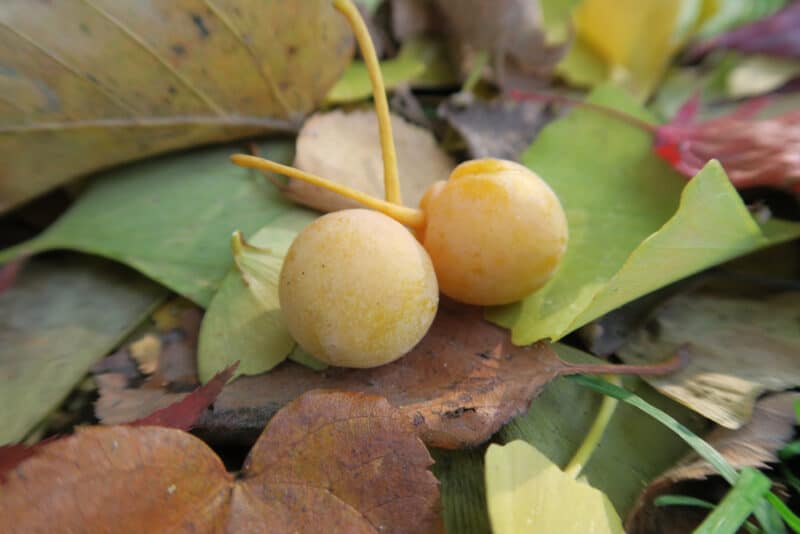
Ginkgo seeds and leaves are toxic in large amounts. But you can eat the leaves and nuts, which are considered an essential medicinal supplement. Most ginkgo trees are males, so they don’t produce fruits. You must have a female tree and nearby males for pollination if you want nuts.
The first step is to gather mature fruits. The ripe fruits will be yellow or orange and have a pungent scent. Honestly, it stinks. That’s one of the reasons people don’t plant female trees. The smell is like vomit and rotten cheese combined.
To get to the nut, clean off the slimy jelly layer around the shell. Wash the nuts well. Once they’re spotless, let them dry and then roast them at 400°F. Crack them open. The nuts you’ll find inside are incredibly versatile.
For the main meal, you can add ginkgo nuts to rice with fish or other vegetables. Or, you can pair them with meat like a chicken. Add them to desserts, or eat them with a touch of salt.
As good as they are, don’t eat the nuts every single day. You don’t want to overdo it. Enjoy the nutrient-rich ginkgo nuts in moderation.
You can also harvest the leaves for their health benefits and prepare them in teas or supplements. Just use caution not to overdo it. If you plan to make a supplement, chat with an expert.
